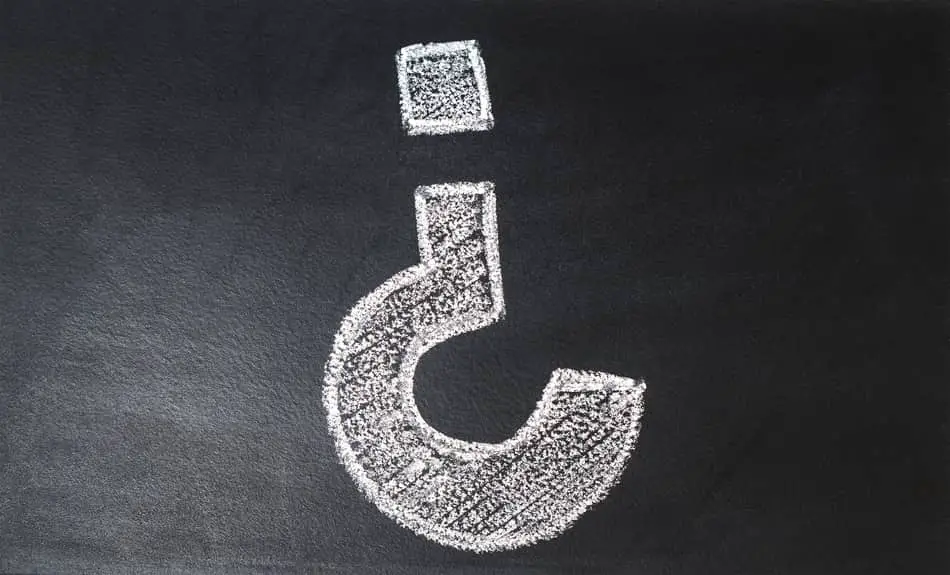
When I first started learning Spanish, I didn’t understand why there was an upside-down question mark typically written at the beginning of a sentence. After some research on the topic, I wrote a helpful post to explain why the Spanish question mark is upside-down and how to type it.
So, why are Spanish question marks upside-down? In 1754, the Real Academia Española (Royal Spanish Academy) recommended that the upside-down question mark be used as a symbol to indicate the beginning of a question in written Spanish.
This rule was slowly adopted over time, but there is more to it than placing an upside-down question mark at the beginning of a sentence and it was not the only rule ordered by Real Academia.
How to Use the Upside-Down Question Mark
The upside-down question mark “¿” helps the reader recognize whether a sentence is a question because it is not always obvious to the reader whether a Spanish sentence is a statement or a question. By having the upside-down question mark “¿” towards the beginning of a sentence, it lets the reader know in advance that the sentence is a question.
However, upside-down question marks “¿” are not always at the beginning of a sentence.
In sentences that are a statement and a question, the clause that asks a question is singled out with the upside-down question mark “¿”.
Here are some examples of how to use the upside-down question mark “¿” for (a) sentences that are only questions, and (b) sentences that combine a statement and a question:
- ¿Cómo te llamas? (What is your name?)
- Estoy cansado, ¿y tú? (I’m tired, are you?)
- Juan, ¿adónde vas? (Juan, where are you going?)
- ¿Adónde vas, Juan? (Where are you going, Juan?)
Also, the upside-down question mark “¿” prevents confusion and misunderstanding for the reader in questions with a yes/no answer. In Spanish, questions that have a yes/no answer are typically written exactly the same as a statement as they would be written as a question.
Here is an example showing how the same phrase can mean different things based on whether it is a statement or a question:
- Vives aqui. – In English, this statement translates to “You live here.”
- ¿Vives aquí? – In English, this statement translates to “Do you live here?”.
As you can see, without the upside-down question mark “¿” at the beginning of “¿Vives aquí?“, the reader does not know until the end of the sentence whether it is a statement or a question. By having the upside-down question mark “¿” at the beginning of the sentence, the reader is easily able to determine that this sentence is a question.
But the upside-down question mark “¿” is not the only symbol or punctuation mark that Real Academia Española (Royal Spanish Academy) required to be used upside-down.
What Other Spanish Punctuation Marks are Upside-Down?
Real Academia Española (Royal Spanish Academy) is the Spanish institution tasked with securing the integrity and stability of the Spanish language. This institution also ordered that the upside-down exclamation point “¡” be used at the beginning of a sentence or clause to indicate emphasis or surprise to the reader. The exclamation points at the beginning and end of a sentence let the reader know there is an emphatic tone to the sentence.
The Spanish language also allows for exclamation marks “!” and questions marks “?” to be combined in a sentence. You are able to begin a sentence with an upside-down exclamation point “¡” and end it with a question mark “?”. Or you can do the opposite where you start the sentence with an upside-down question mark “¿” and end it with an exclamation point “!”. These type of sentences can be statements that are questions but show excitement or surprise to the reader.
Here is an example where both the exclamation point “!” and question mark “?” are used:
- ¡Y tú quién te crees? – In English, this translates to “And who do you think you are?!”.
However, typically all four (4) signs are used with one punctuation mark being on the outer side of the sentence and the other punctuation mark being on the inner side of the sentence.
Here is our example again with all four (4) punctuation marks. It does not matter whether the question marks “?” or the exclamation points “!” are on the inside or outside of the sentence.
- ¿¡Y tú quién te crees!? – Once again, in English, this translates to “And who do you think you are?!”.
- ¡¿Y tú quién te crees?!
Now that we understand how to use these symbols in a sentence, we also need to know how to type them on our devices (i.e., Apple Mac computer, PC, iOS device and Android device). Below, I have provided a detailed overview on how to type these symbols for each device.
How to Type Upside-Down Question Marks and Exclamation Points
Making these symbols on your computer or smartphone can be tricky. I know it took me a long time to figure out each one of these. Luckily, I have broken down how to type them for a Mac computer, a PC with Microsoft Windows, an iOS device and an Android device.
If you think you may forget these, make a cheat sheet next to your computer or create a shortcut on your device. Once you go through these steps, you should have no trouble making an upside-down question mark “¿” or an upside-down exclamation point “¡”.
On a Mac computer
I found it easiest to type a “¿” or a “¡” on the Mac computer. I was able to type them on my internet browser, Microsoft Word and Microsoft Excel. However, I found that I was not able to insert a “¿” or a “¡” symbol from the “Advanced Symbol” button on Microsoft Word and Microsoft Excel. The “¿” and “¡” symbols were simply not available under “Advanced Symbol”.
The simplest and easiest way to create these symbols on a Mac computer is to type them on your keyboard as detailed below.
To create the upside-down question mark “¿” use this combination:
- Press and hold alt/option + shift
- While holding alt/option + shift, then press ?
To create the upside-down exclamation point “¡” use this combination:
- Press and hold alt/option + 1
On a PC with Microsoft Windows
For a PC with Microsoft Windows, I would also make these symbols by typing them on the keyboard. The keystrokes and are fast and easy.
Here are the keyboard combinations on a PC for the upside-down question mark “¿” and the upside-down exclamation point “¡”:
- For the upside-down question mark “¿” = alt + ?
- For the upside-down question mark “¡” = alt + !
You can also install the US International keyboard on your computer by searching for language settings > options > add a keyboard > United-States International. Once installed, you will see a language bar appear next to the clock in the Start bar. The US International keyboard will allow you to type characters that are not usually found on the standard keyboard.
On an iOS device (i.e., iPhone, iPad, etc.)
Creating a “¿” or “¡” on your iOS device is easy and intuitive. I was able to quickly create these symbols on my wife’s iPhone and my iPad.
First, pull up the keyboard on your device whether it be under iMessage or another app on your iOS device. Then, press the “.?123” button or “123” button on your keyboard so that you are displaying the numbers and symbols. Next, press and hold “?” or “!”. After a brief moment, a bubble should appear above the “?” or “!”. Once the bubble appears, slide your finger up to the upside-down symbol.
Be sure to slide your finger up to the symbol. If you take your finger off of the keyboard, then the upside-down symbol will disappear.
On an Android device
I had a little more trouble figuring out how to type a “¿” and a “¡” on my Samsung Galaxy (Android) phone. However, it is not difficult and is just a couple steps different than an iOS device.
First, pull up the keyboard on your Android device, such as your Message app for texts. On some Android devices, you will look for the “Sym” button on your keyboard to find Symbols. On my Samsung Galaxy, I pressed the “!1:)” button to access Symbols. Next, press the “1/2” button on your keyboard. On my Samsung Galaxy, the “1/2” button is located directly above the “ABC” button in the bottom left of the keyboard. After you press the “1/2” button, you should see the keys for the “¿” and the “¡” that you can press.
Related Questions
Which other languages use upside-down question marks? Languages that have cultural ties to Spanish, such as Catalan, Galician, and Waray languages (former Spanish colony of the Philippines).
Why is the upside-down question mark not used in English? In English, we change the order of the words or add in auxiliary question words, such as Who, What, When, Where, Why, How or by using Is or Are at the beginning of a question.
Is the upside-down question mark being used less today in Spanish? Spanish is slowly moving towards not using the upside-down question mark in informal situations, such as internet chat rooms. It is faster and easier for people to just type the final question mark.
